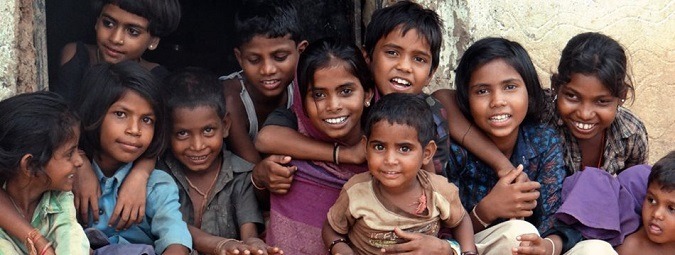One in eight children in India aged 2–9 may have neurodevelopmental disorders
 ___
___
1 in 8 kids in 2–9 age group may have developmental deficits (Times of India):
“Almost one in eight Indian children aged two to nine may have at least one neurodevelopmental disorder, states a study published in PLOS Medicine journal on Wednesday.
Neurodevelopmental disorders include a wide range of issues ranging from visual and hearing impairment to autism and learning disabilities.
The study is among the first to look at a wide prevalence of such disorders. Conducted by Narendra K Arora of the Delhi-based INCLEN Trust International, the PLOS Medicine study looked at 4,000 children across five cities for hearing impairment, speech and language disorders, autism spectrum disorders, and intellectual disability. It found that hearing impairment and intellectual disability are the most common problems in India…
“If it is scary to realize that one in eight children has some form of neurodevelopmental issue, it is scarier to know that India has no standard method to identify or treat such children,” said Dr Samir Dalwai of Indian Academy of Pediatrics.
The Study:
Neurodevelopmental disorders in children aged 2–9 years: Population-based burden estimates across five regions in India (PLOS Medicine). From the abstract:
- Background: Neurodevelopmental disorders (NDDs) compromise the development and attainment of full social and economic potential at individual, family, community, and country levels. Paucity of data on NDDs slows down policy and programmatic action in most developing countries despite perceived high burden.
- Methods and findings: We assessed 3,964 children (with almost equal number of boys and girls distributed in 2–<6 and 6–9 year age categories) identified from five geographically diverse populations in India using cluster sampling technique (probability proportionate to population size)…The study sample was underrepresentative of stunting and LBW and had a 15.6% refusal. These factors could be contributing to underestimation of the true NDD burden in our population.
- Conclusions: The study identifies NDDs in children aged 2–9 years as a significant public health burden for India. HI was higher than and ASD prevalence comparable to the published global literature. Most risk factors of NDDs were modifiable and amenable to public health interventions.
The Study in Context:
- Study combines neuroimaging with machine learning to predict, with 96% accuracy, whether high-risk 6‑month-old babies will develop autism spectrum disorder (ASD) by age 2
- Neuroimaging study finds extensive brain rewiring–in just six months–among illiterate adults learning to read and write
- Is modernity leading to a growing Cognitive Divide?


